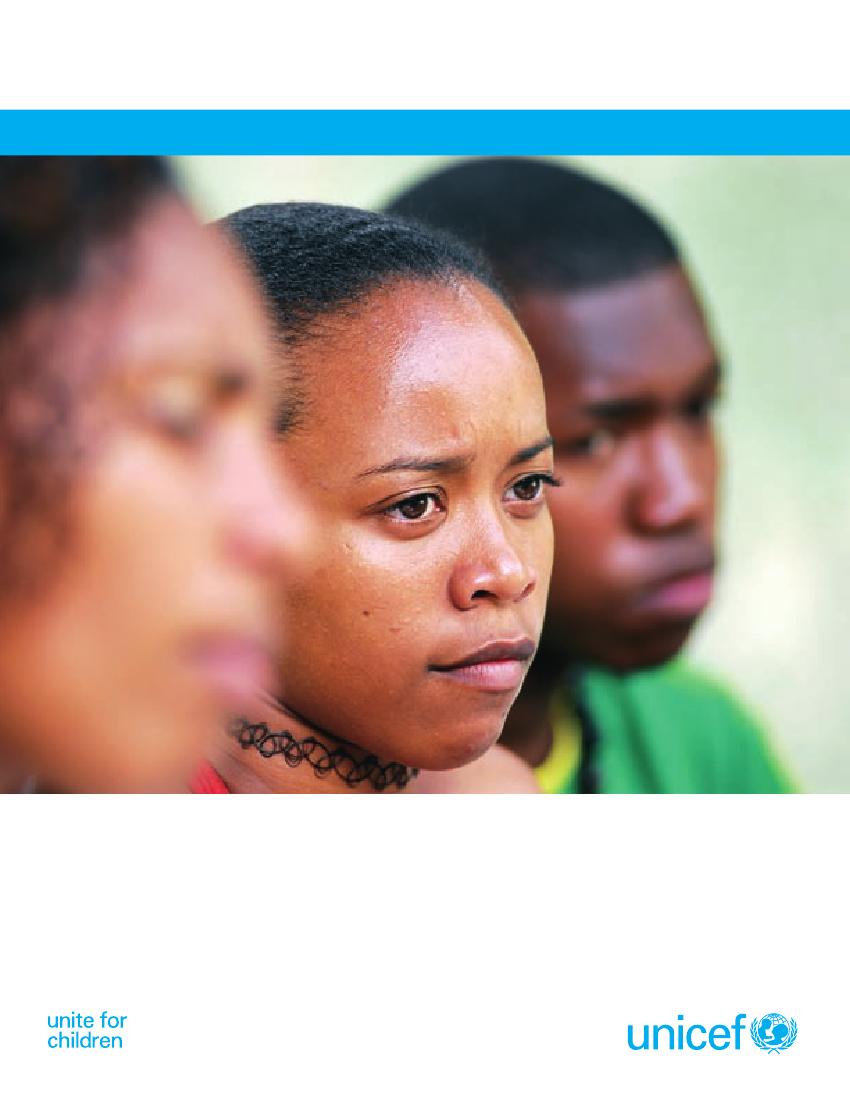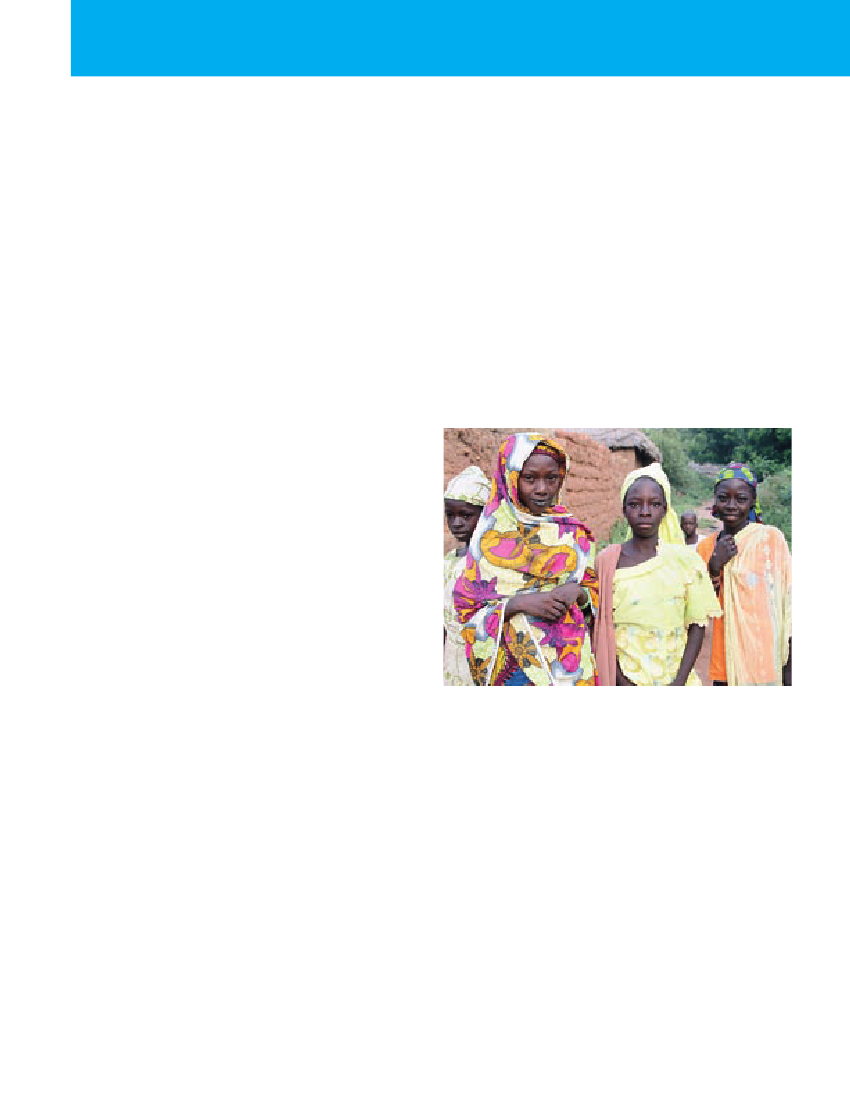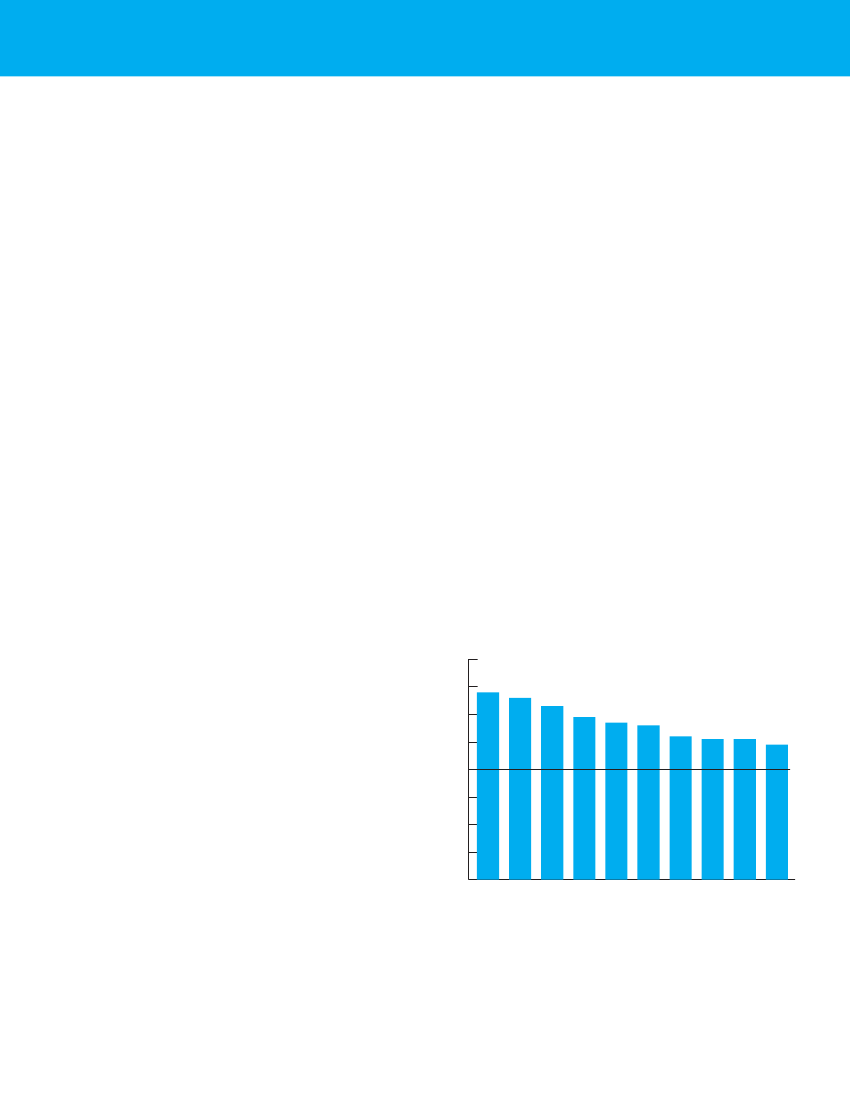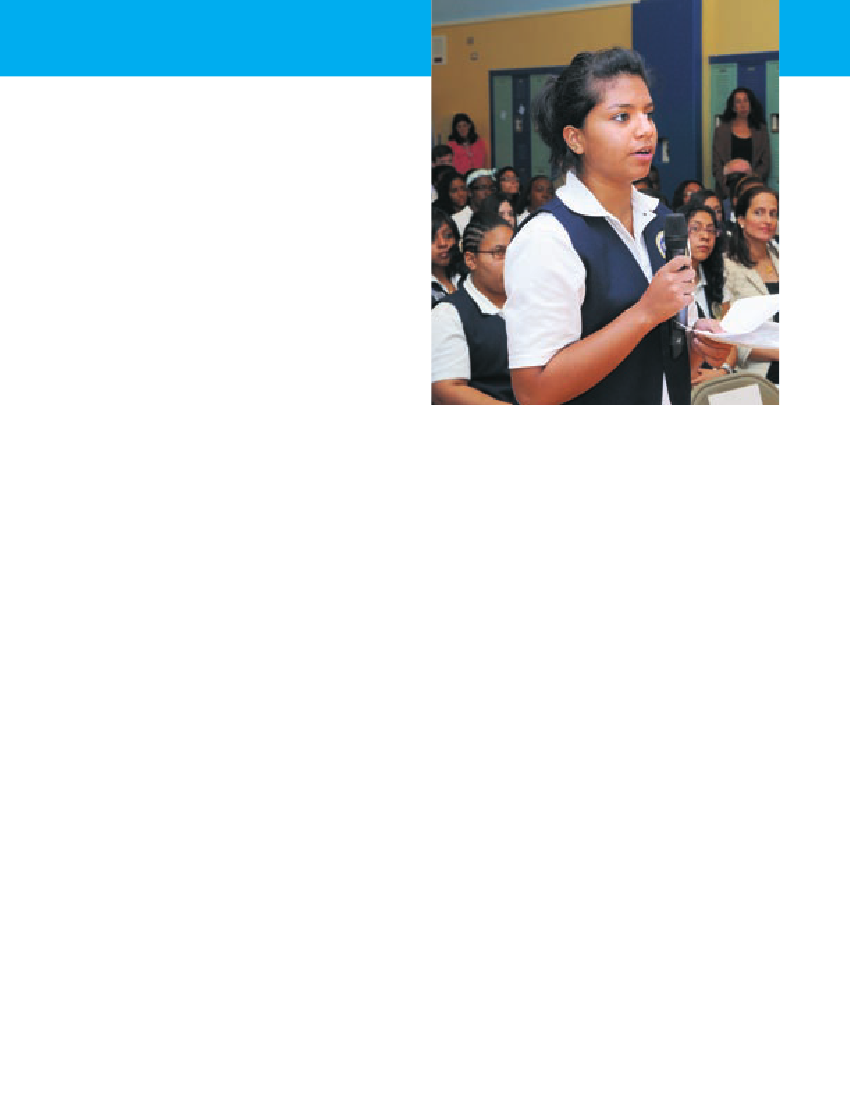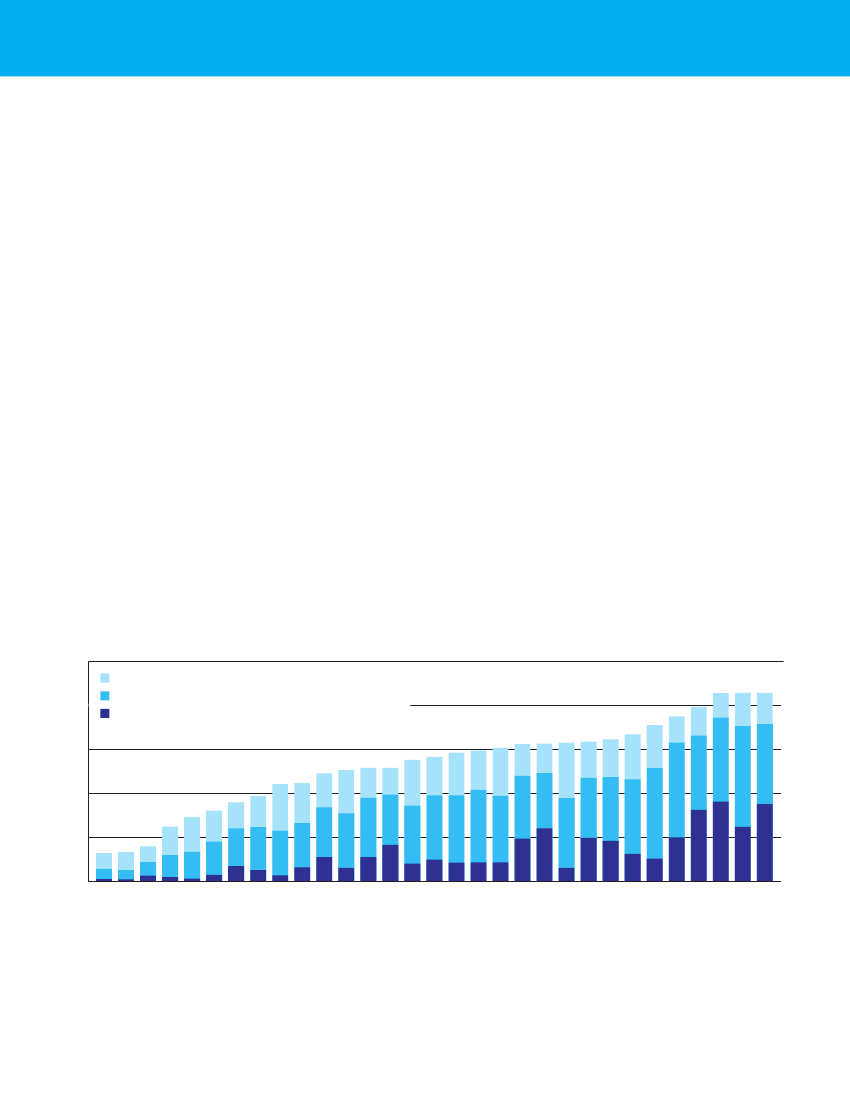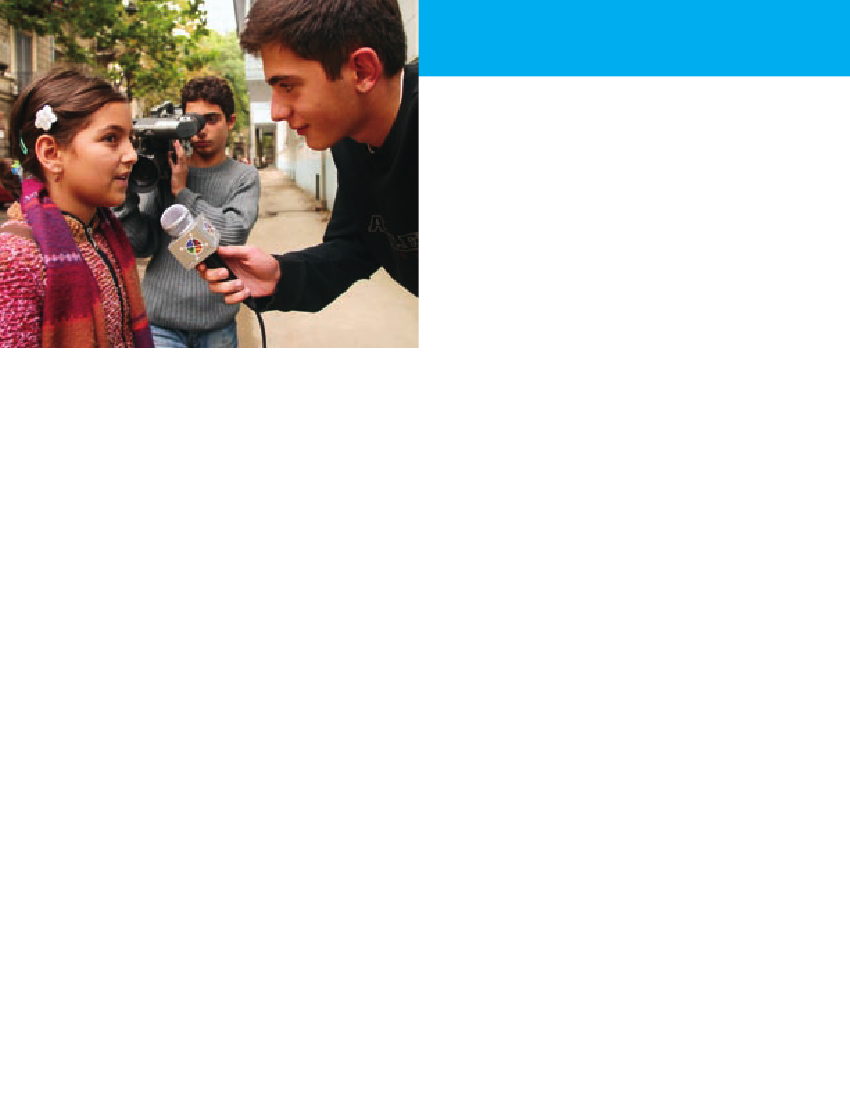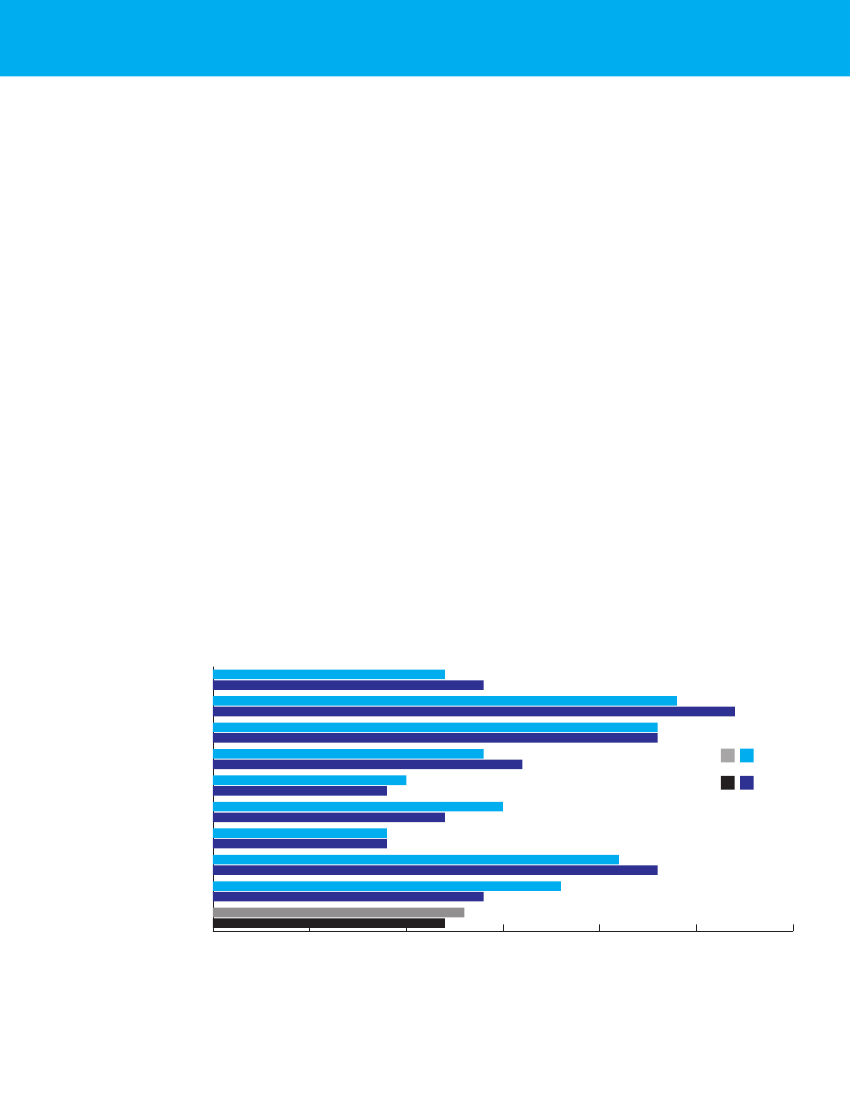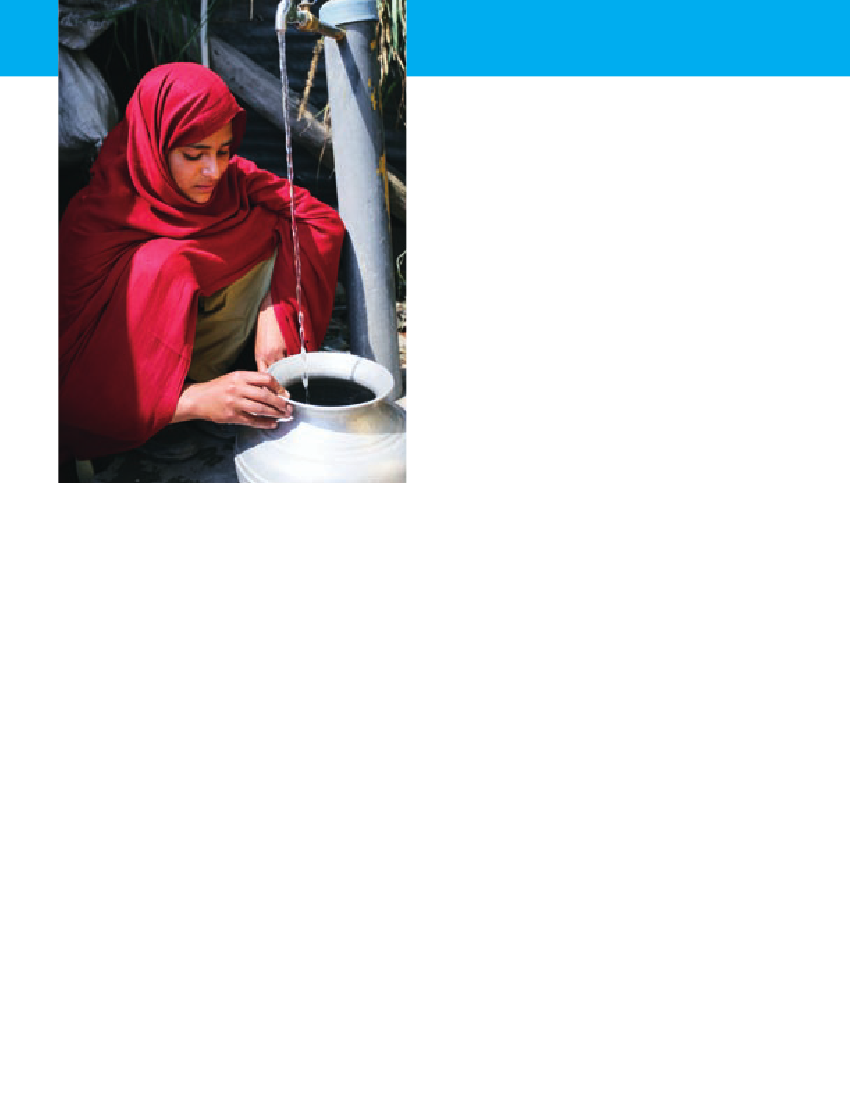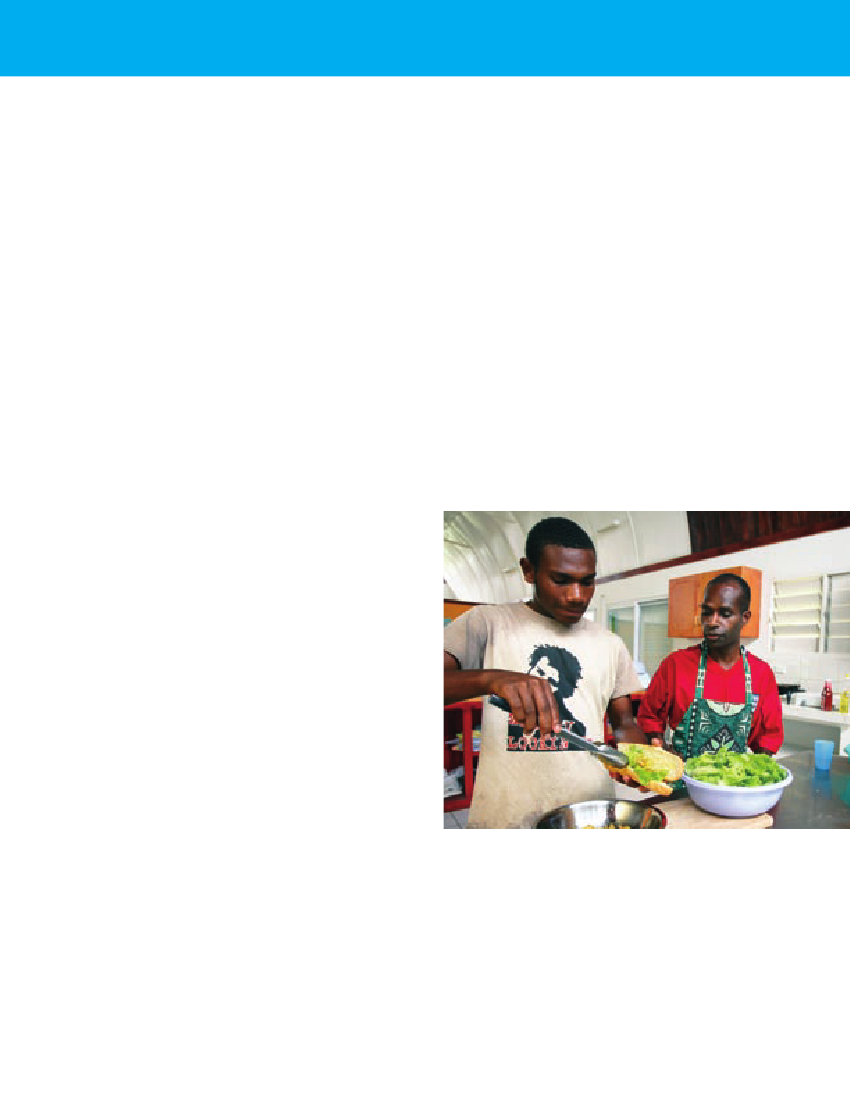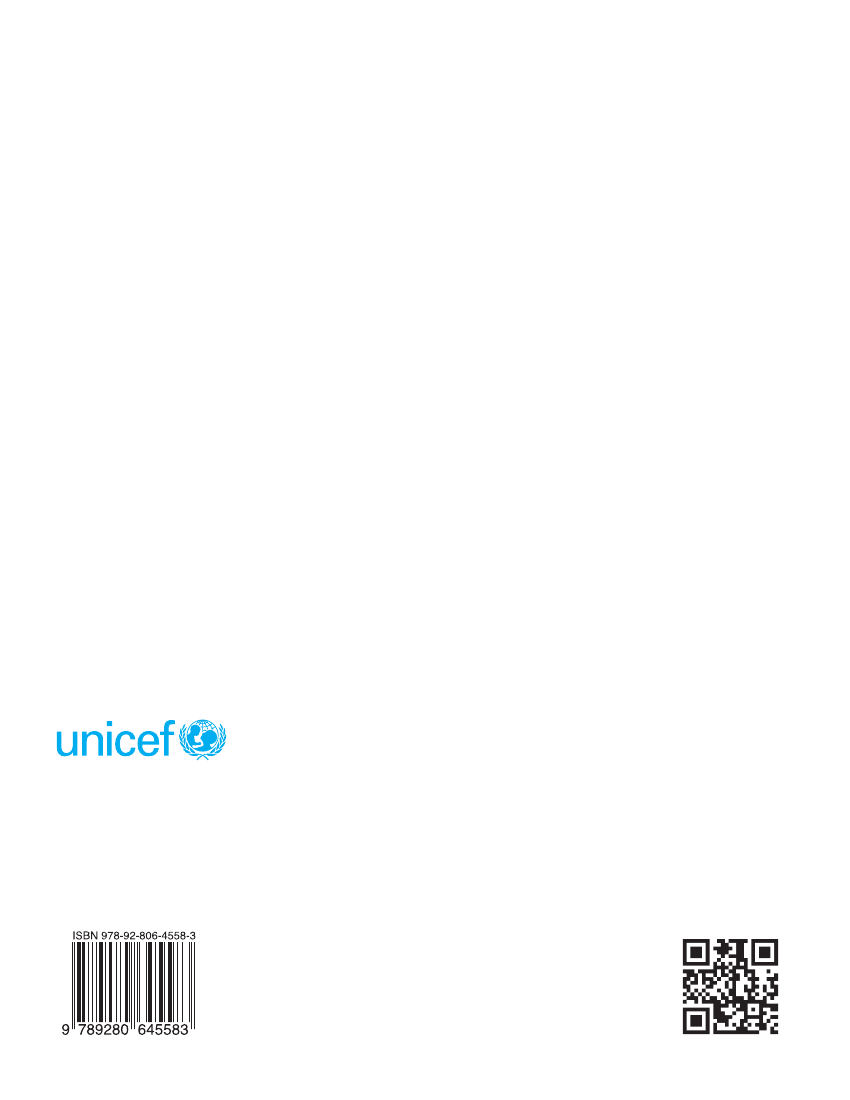Udenrigsudvalget 2010-11 (1. samling)
URU Alm.del Bilag 108
Offentligt
THE STATE OF THE WORLD’S CHILDREN 2011EXECUTIVE SUMMARY
Adolescence
An Age of Opportunity
THE STATE OF THE WORLD’S CHILDREN 2011EXECUTIVE SUMMARYThe Imperative of Investing in Adolescence . . . . . 1Adolescent Rights . . . . . . . . . . . . . . . . . . . . . . . . . . 3Global Challenges for Adolescents . . . . . . . . . . . . 8Seizing the Opportunity of Adolescence . . . . . . . 11Working Together for Adolescents . . . . . . . . . . . 13
EXECUTIVE SUMMARY
The Imperative of Investingin AdolescenceAmong the multitude of issues, goals, targets andpriorities on the international development agenda,adolescents – defined by the United Nations as thosebetween 10 and 19 years of age – seldom come first.Particularly when development budgets are con-strained, as now, conventional wisdom might dictatedevoting most resources to children in the first decadeof their lives. Investment in health, nutrition, basiceducation and protection for younger children hasin recent years secured a significantly better start inlife for many. With this achievement, however, comesa responsibility to ensure that support for childrencontinues as they grow and develop. Lasting changein the lives of children and young people, a criticalunderlying motivation of the Millennium Declaration,can only be achieved by complementing the commit-ment to the first decade of life with recognition of theimportance of the second.1990, notably the 33 per cent reduction in theglobal under-five mortality rate, the near elimina-tion of gender gaps in primary school enrolment inseveral regions and the considerable improvementsin access to primary schooling, safe water, routineimmunizations and critical medicines such as anti-retroviral drugs.
Investing in adolescents is compellingfor at least five reasons:• First, it is right in principle under the Convention onthe Rights of the Child, which applies to adolescentsunder the age of 18, and the Convention on theElimination of All Forms of Discrimination againstWomen, which applies to all adolescent girls. If weare to fulfil our commitments to children and youngpeople under these instruments and earnestly pursueour pledge to achieve the Millennium DevelopmentGoals by 2015, we must make adolescent well-beingand rights an integral part of the agenda.• Second, it is the most effective way to consolidatethe historic gains achieved for children in early(0–4 years) and middle (5–9 years) childhood sinceHawa, 12, (second from left) recently re-enrolled in school followingthe intervention of the National Network of Mothers’ Associationsfor Girls, which advocates for girls’ education, Cameroon.
• Third, investing in adolescents can accelerate thefight against poverty, socio-economic disparitiesand gender discrimination. Inequities often becomestarkly manifest during adolescence: children whoare poor or marginalized are less likely to make thetransition to secondary education and more likely toexperience such protection abuses as child marriage,early sex, violence and domestic labour – especiallyif they happen to be girls. Denying adolescents theirrights to quality education, health care, protectionand participation perpetuates the vicious cycle of
ADOLESCENCE: AN AGE OF OPPORTUNITY
1
�UNICEF/NYHQ2009-2036/Sweeting
poverty and exclusion that robs them of the chanceto develop their capacities to the fullest.• Fourth, it will enhance our efforts to address thegreat challenges of our times: climate change, eco-nomic turmoil, explosive urbanization and migra-tion, HIV and AIDS, and humanitarian crises ofincreasing frequency and severity. In order to effec-tively deal with the intergenerational consequencesof these challenges, adolescents will need to betreated as equal partners and equipped with theappropriate skills, capacities and knowledge.• Finally, while adolescents are often referred to as the‘future generation’ of adults, we should not forgetthat they are also firmly part of the present genera-tion of global citizens – living, working, contributingto households, communities, societies and econo-Adolescent population (10–19 years) by region, 2009CEE/CIS58 millionEastern andSouthern Africa91 millionWest andCentral Africa94 millionMiddle EastandNorth Africa84 million
mies. No less than young children do they deserverecognition, protection and care, essential commodi-ties and services, and opportunities and support.Indeed in some contexts – particularly with regard toprotection risks such as child marriage, commercialsexual exploitation and conflict with the law – ado-lescents, of all children, may have the greatest needs.Yet little investment and assistance is delivered inthese important areas, sometimes due to political, cul-tural and societal sensitivities. Given the strong linkbetween protection, education and child survival, it isclear that investment in adolescents, especially girls,has the power to reduce the number of child deaths,improve nutrition and address violence, abuse andexploitation of children and women in earnest.For these reasons, and in support of the secondInternational Year of Youth, which began in August2010, UNICEF has dedicated the 2011 edition of itsflagshipThe State of the World’s Childrenreport toadolescents and adolescence. The report examines thechallenges girls and boys face as they enter the seconddecade of life, outlining not only the risks and vulner-abilities of this pivotal time but also the singular oppor-tunities it can offer, both for the adolescents themselvesand for the societies they live in. The accumulatedevidence demonstrates that investing in adolescentsprovides our best hope of breaking the intergenera-tional cycle of poverty and inequity that weakens com-munities and countries and imperils the developmentand rights of countless children. By taking action now,we have a chance to nurture a generation empoweredto realize their rights, laying the foundation for a morepeaceful, tolerant and equitable world, in which eachsuccessive generation of children can thrive.
Industrializedcountries118 millionLatin Americaand Caribbean108 million
East Asiaand Pacific329 million
South Asia335 million
Source:United Nations, Department of Economic and Social Affairs,Population Division,World Population Prospects: The 2008 Revision,<www.esa.un.org/unpd/wpp2008/index.htm>, accessed October 2010.
2
THE STATE OF THE WORLD’S CHILDREN 2011
EXECUTIVE SUMMARY
Adolescent RightsNot all adolescents enjoy access to quality education,health care, protection and participation. An accu-rate assessment of their current situation is the firststep towards monitoring and securing their rights.Unfortunately, comprehensive disaggregated data,essential to tracking progress, remain scarce, particu-larly in developing countries. National and interna-tional information systems for children focus mostlyon the early years, when health threats are greatestand school attendance easier to assess. Although anincreased focus on holistic child protection has pro-duced some key indicators on issues that affect ado-lescents – such as child labour, child marriage, femalegenital mutilation/cutting and violence and disability– the scope for more and better information remainsconsiderable.seek to establish an autonomous identity, they mayexperiment with tobacco, alcohol and other sub-stances or engage in risky behaviour that can lead toinjuries or long-term health problems.
NutritionNegligible in earlier childhood, gender differences innutrition become apparent in adolescence and are par-ticularly striking in West and Central Africa and SouthAsia. The implications of nutritional difficulties canbe particularly serious for adolescent girls: many ofthose living in regions with very high rates of anaemiaand undernutrition are married and become pregnantduring adolescence, and are thus more likely to die orsuffer complications during pregnancy and delivery.Overweight and obesity also undermine the health ofPrevalence of anaemia among adolescent girls (15–19) ina subset of high-prevalence countries with available data80%70605040302010068666359
HealthAdolescents around the world are generally healthiertoday than in the past. Thanks largely to investmentsin early and middle childhood, those who reach theirsecond decade have already negotiated the years ofgreatest mortality risk. Accidents account for over athird of adolescent deaths: in 2004, nearly 400,000adolescents died of unintentional injuries. Many couldbe prevented by improving road safety, especiallyin areas where rapid urbanization coincides with alarge adolescent population. Boys are more frequentlycasualties of road traffic accidents, and they are alsomore prone to injury or death from violence, whetherrandom or organized.In part, the vulnerability of adolescents stems fromtheir natural propensity to take risks and test theboundaries of socially acceptable behaviour. As they
57
56
52
51
51
49
i
l
na
n
o
aIndi
*The horizontal line at the 40 per cent mark represents the threshold atwhich anaemia is considered a severe national public health issue.Source:DHS and national surveys, 2003–2009.
ADOLESCENCE: AN AGE OF OPPORTUNITY
rkFa inasoGuineaUni L Siete e rrd o aof Re neTa punz ban licia
Mal
ga
niBe
ne
ha
G
Co
ng
Se
Bu
3
A girl asks a question at aspecial assembly held at theYoung Women’s LeadershipSchool of East Harlem,New York City, USA.
Sexual and reproductive healthMany adolescents around the world are engaging insexual relations. Household survey data indicate thatin developing countries (excluding China) around11 per cent of females and 6 per cent of males aged15–19 claim to have had sex before the age of 15. Tostay healthy and safe, adolescents need access to high-quality sexual and reproductive health services andinformation from an early age. Significant gender dis-parities exist in this area: while adolescent boys morefrequently engage in higher-risk sex, they are alsomore likely to use condoms. The greater vulnerabilityof girls to sexual and reproductive health risks as wellas gender-related protection risks in many countriesand communities makes it especially important thatthey be empowered with the requisite knowledge andaccess. Child marriage is associated with a high likeli-hood of complications in pregnancy and childbirth– among the leading causes of death for girls betweenthe ages of 15 and 19 worldwide – as well as anincreased risk of sexually transmitted infections andunwanted pregnancies. Insufficient control over theirown fertility leads many adolescent girls to resort tounsafe abortions, risking serious injury or death andoften putting themselves in conflict with the law.HIV and AIDSHIV and AIDS pose a great threat to the health andsurvival of the current generation of adolescents. Girlsare at far greater risk of contracting HIV than boys,both as a result of greater physiological susceptibilityand because they often lack control over sexual situ-ations and condom use; sexual violence, both inside
and outside of marriage, further heightens their riskof infection. Investment in reproductive health servicesand dissemination of sound knowledge about HIVempowers adolescents in their choices and behaviours,and there are indications that these efforts are begin-ning to bear fruit – though here, too, gender disparitiesexist. While more adolescent girls than boys get testedfor HIV, boys are more likely to have comprehensiveknowledge about prevention. Making such servicesand information available in early adolescence (10–14)is imperative to curbing the spread of HIV; by late ado-lescence (15–19), the risk of infection for young peoplein high-prevalence countries is already considerable.
Mental healthFor many people, mental health problems first surfaceduring adolescence. Many countries are seeing anincrease in cases of depression, eating disorders (par-ticularly among girls) and self-destructive behaviours.While these often stem from low self-esteem and thestrong pressure to conform to unrealistic expectations,contributing factors are thought to include violence, illtreatment, abuse and neglect, and bullying.DisabilityNobody knows how many adolescents are affected byphysical or mental disability. Frequently segregatedfrom society or regarded as objects of charity, disabled
4
THE STATE OF THE WORLD’S CHILDREN 2011
�UNICEF/NYHQ2009-1416/Markisz
many adolescents in both industrialized and develop-ing countries.
EXECUTIVE SUMMARY
adolescents are less likely to attend and complete schooland thus more likely to be impoverished as adults;many also fall victim to violence and abuse. Extendingan equity-based approach to disability can effectivelyalter perceptions and eliminate some of the obstaclesthat children and adolescents in this group face. Accessto transport, buildings, educational facilities and otherresources is crucial to ensuring that they can enjoy theopportunities afforded their peers.
Education yields many long-term benefits, particu-larly for adolescent girls, contributing to later marriage,lower fertility rates and reduced domestic violence aswell as lower infant mortality and improved child nutri-tion. In most regions of the world, girls’ attendancerates are lower than those of boys. At the same time,in almost all developed countries and in Latin Americaand the Caribbean as well as East Asia and the Pacific,girls outperform boys in school achievement.Adolescents from marginalized groups often lose outeven where secondary schooling is available. To grantthem the opportunity to gain the skills to make adecent living, and the knowledge they need to protectthemselves and realize their rights, a greater varietyof educational options is required. Educationally dis-advantaged adolescents can benefit from non-formalor peer education, vocational and technical coursesand flexible ‘catch-up’ programmes for those whoseschooling has been interrupted. By focusing morekeenly on equity in education, we can better reachvulnerable adolescents excluded by poverty, HIV andAIDS, disability or ethnicity.
EducationSecondary education is critical to adolescent develop-ment and well-being. To successfully negotiate themultiple risks to their development and rights, adoles-cents must be armed with a broad spectrum of knowl-edge and essential skills, including solving problemscreatively, finding and critically evaluating informa-tion and communicating effectively. Where secondaryschooling is available, primary schools tend to beof higher quality and to enrol more children, whilecommunities benefit from greater civic participation,lower levels of youth violence, reduced poverty andgreater social empowerment.Most children start secondary education in early ado-lescence. But within this age group, 1 in 5 is not inschool at all (1 in 3 in sub-Saharan Africa) – a totalof almost 71 million adolescents. Meanwhile, a thirdof adolescents who attend school are still completingprimary grades. Despite significant progress over thelast decade, many millions do not make the transitionto secondary grades. Incomplete primary education,higher costs, greater distance to school and economicimperatives are just some of the obstacles preventingchildren from continuing their schooling.
ProtectionMany of the key threats to children from violence,abuse and exploitation are at their height during ado-lescence. It is primarily adolescents, mainly boys, whoare forced into conflict as child combatants or com-pelled to work in hazardous conditions as child labour-ers, severely curtailing their chances of completingan education or escaping from poverty. Millions findthemselves in conflict with the law; others are deniedtheir rights to protection by inadequate legal systemsor by social norms that permit their exploitation and
ADOLESCENCE: AN AGE OF OPPORTUNITY
5
abuse. Acts of violence – physical, sexual or psy-chological – take place within the home, school andcommunity, perpetrated by both peers and adults.Adolescents with disabilities, those living on thestreets, those in conflict with the law and refugee anddisplaced children are particularly vulnerable.A thorough understanding of the extent to whichadolescents are subject to violence, abuse, exploita-tion, neglect and discrimination is hampered by alack of reliable data. Such information is difficult tocollect because many forms of protection risk occur inclandestine, extra-legal environments and few of thoseinvolved are willing or able to report on the issues.Child trafficking – be it into forced labour, marriage,prostitution or domestic work – is one such area. Over
the past decade many countries have introduced newlaws to curb trafficking, though some offenders con-tinue to go unprosecuted.Threats to adolescent rights are exacerbated by genderdiscrimination and exclusion. Girls experience higherrates of domestic and sexual violence than boys; theseabuses reinforce male dominance in the household andcommunity, impeding female empowerment. Around 1in 3 women in the developing world (excluding China)is married before the age of 18. Child marriage oftenleaves girls isolated and powerless within the householdof their husband’s family, making them more vulnerableto abuse and often forcing them to bear an excessiveburden of domestic work. Female genital mutilation/cutting, though declining, still occurs in 29 countries.
Marriage by age of first union in selected countries with available disaggregated dataPercentage of women aged 20–24 who were first married or in union by ages 15, 18 or 20100Married or in union at age 18 or after but before age 2080Married or in union at age 15 or after but before age 18Married or in union before age 1555 566762 63 63 6459 61 625871757985 86 86
6044 4449 50 51 51
40251613 132932
36
39
20
0ASw fricaz ailaN ndamSr ibi L iaanRw kaCa ape ndaVePa rdekistG anhaLe nasothoKenyG aabCo onngLi oberN iaigDeremiBe aocrS nof atic en inth R ege ep alCo ung blio cM ZamadUbniSi aga iatedersRera capuLe roblic Eth neof ioTa pinz aanEr iaitreaIndiaUgandN aepG alBa uing nela adeshNigerMaliChad
So
Source:DHS and other national surveys, 2000–2009.
6
ut
h
THE STATE OF THE WORLD’S CHILDREN 2011
EXECUTIVE SUMMARY
A young girl is interviewed by 16-year-old journalists from the Young People’sMedia Network, which promotes theestablishment of youth networks,Tbilisi, Georgia.�UNICEF/NYHQ2004-1027/Pirozzi
Combatting harmful practices that predominantlyaffect women and girls requires rights-based pro-grammes that promote discussion and broad par-ticipation as a means to generate consensus and createsocial change. In addition to fostering greater equalitybetween women and men, such efforts can improvematernal health, reduce child mortality, diminish edu-cational disadvantage and strengthen protection forchildren and women.
In addition to being a fundamental right, participationstimulates the full development of the personality andevolving capacities of the child. Through meaningful civicengagement, young people can learn about their rights,explore a spectrum of social relations and prepare tobe active citizens of the future, bringing energy, enthusi-asm and fresh perspectives to the development of theircommunities.Traditionally, young people enter civic life by joiningformal bodies such as youth councils and parliaments;today’s adolescents increasingly choose online or inter-active activism. As ‘digital natives’, accustomed to aworld of interactive, digital communication, adolescents– particularly those in industrialized countries – areforging a new style of political activism built aroundrelevant and agile networks on the Web. Where possible,adolescents should be encouraged to create their own,adolescent-led organizations, through which they cancarve out a space for meaningful participation andrepresentation.Used appropriately, the Internet, social networking andother communications technologies can be excellenttools for empowering children to speak out on mattersthat are important to them, lending momentum andgeographical breadth to child-led activism. Enablingall young people to voice their opinions via a commonplatform can help level inequalities and overcome dis-crimination, especially for adolescents with disabilities,girls or those living in rural areas where youth associa-tions may not exist.
ParticipationAdolescents do not become active and responsible citi-zens overnight; they must be empowered to learn andpractice citizenship over the course of their transitionto adulthood. Recognized as one of the four guidingprinciples of the Convention on the Rights of the Child,the right of children to express their views freely onall matters affecting them is a vital component of theirsurvival, development and education. Considerableeffort has been made to develop laws and policies thatsupport adolescent participation, but their implementa-tion is not always effective or consistent. Many long-standing practices and attitudes, as well as politicaland economic barriers, continue to impede adolescents’right to voice their opinions and have them duly takeninto account. Nor is that right sufficiently extended tothose children who may have difficulties expressingthemselves, including girls, adolescents with disabilitiesand minority, indigenous and migrant children.
ADOLESCENCE: AN AGE OF OPPORTUNITY
7
Global Challenges for AdolescentsClimate change and the environmentFor the current generation of adolescents, the threatsposed by climate change have an immediacy thatescapes many of their elders, who may not live to seeits full impact unfold. Nine out of ten adolescents livein developing countries, which are expected to bearthe brunt of the effects of environmental degrada-tion, loss of vital natural resources and greater foodand water insecurity – and which tend to lack thesystems and resources to rapidly restore ‘normality’following natural disasters. Climate-related disrup-tions can have long-term deleterious consequencesfor the lives and prospects of adolescents, poten-tially compromising their health and nutrition andinterrupting their education. Displaced families orthose who have lost their livelihoods may no longerbe able to send their children to school or pay forhealth care.Keenly aware that they will be saddled with muchof the cost and burden of mitigating and adapting toclimate change, many adolescents are passionatelyadvocating for doing something about it now. TheUnited Nations Framework Convention on ClimateChange (UNFCCC) has sparked vibrant dialogueamong young people across the globe; in 2009, youthwere officially recognized as civil society actors in theUNFCCC negotiating process. Incorporating adoles-cents’ perspectives and encouraging their participationin disaster risk reduction and climate change adapta-tion strategies at the national and international level isnot just a matter of principle – it is an imperative. Themagnitude of our current environmental challengesdemands an intergenerational response, in which ado-lescents work alongside adults as integral partners indecision-making.
Poverty, unemployment and globalizationThe future economic and social development of nationsdepends on harnessing the energy and developing theskills of young people. It is during adolescence thatmany people have their first experience of work, wheth-er formal or informal, and often they are expected toplay a part in supporting their families. Appropriatework can be beneficial, as long as it does not precludethe fulfilment of rights. With 81 million young peopleout of work, youth unemployment is now a concernin almost every country. Adolescents struggle to finddecent work guaranteeing them a foothold above thepoverty line. In many developing countries, the paucityof opportunities for productive full-time employmentmeans that the first experience of work for young peo-ple is all too often one of wasted talent, disillusionment,underemployment and continued poverty.Despite advances in health and education, the benefitsof globalization remain out of reach for millions ofadolescents. Many of those who have been to schoolare emerging with insufficient skills to compete in aninterconnected world. This skills deficit can hold backentire economies; it is a significant obstacle to higherlevels of investment and faster economic growth.Information technology has the potential to removebarriers to education and literacy, and it can unlockmany of the benefits of globalization. But this magickey remains out of reach for many: a vast digitaldivide in access and skills persists, not only betweenthe industrialized and the developing world, particu-larly the least developed nations, but also between richand poor within countries. Access and skills trainingare particularly hard to obtain for disabled adoles-cents, those from marginalized communities or ethnicminorities and, in some societies, for adolescent girls.
8
THE STATE OF THE WORLD’S CHILDREN 2011
EXECUTIVE SUMMARY
Now is the time to invest in developing the skills ado-lescents need to propel themselves and their countries’economies towards greater security and prosperity.Many developing countries, particularly low-incomenations, currently find themselves at a point of uniquedemographic opportunity. A high proportion of adoles-cents in their populations creates a very large produc-tive workforce, opening up a two-decade window formore robust economic development. Four key policyareas – employability, entrepreneurship, equal oppor-tunities for young men and women, and job creation– must be included in national action plans to addresspoverty and unemployment among adolescents.
encounter growing up, the vast majority of adolescentspeacefully accept their societies’ codes of conduct. Theyouthful revolt against social norms generally marksa temporary phase, one that disappears spontane-ously with the transition to adulthood. Some juvenileinfringements of the law, such as truancy or runningaway from home, are simply ‘status offences’, out-lawed only on the basis of age. The majority of seriouscrimes emerge from adolescents’ involvement in gangs.Young men are far more likely to offend, and althoughgang culture rejects many established adult values, ittends to import traditional gender roles.Most adolescents who come into conflict with the laware still children, whose rights under the Conventionmust be respected. UNICEF estimates that at any onetime more than one million children are detained bylaw enforcement officials. In prisons and institutions
Children in conflict with the lawAdolescents are often portrayed as a threat to commu-nity peace and security. But despite the difficulties theyGlobal trends in youth unemploymentSub-Saharan AfricaNorth AfricaMiddle EastLatin Americaand CaribbeanSouth AsiaSouth-East Asiaand PacificEast AsiaCentral and South-EasternEurope (non EU) and CISDeveloped economiesand European UnionWorld05109991012
12
14242323141627
20091998
15
2114121318
23
1520Youth unemployment rate, %
25
30
Source:
International Labour Organization,Global Trends in Youth Employment,ILO, Geneva, 2010, Annex 1, Table A5.ADOLESCENCE: AN AGE OF OPPORTUNITY
9
A 12-year-old girl collectswater from a tap that wasinstalled at the doorstep ofher family’s house, Pakistan.
minimum age for recruitment into military service to18 and criminalized the recruitment of children byrebel groups.Although adolescents are not as vulnerable as youngchildren to death and disease as a result of conflict,they are at greater risk in other ways. They may betargeted for recruitment by armed groups, forced tocarry weapons and participate in atrocities or elseheld as sexual or other types of slaves. Conflict andemergencies also force many adolescents to discon-tinue their education, owing to disruption, economicconsiderations or extra caring duties. Both conflictand emergency situations increase the risk of impov-erishment and make adolescents more vulnerable tocriminal activity, violence and exploitation.But at times of crisis adolescents need not be only vic-tims and witnesses – given the chance, they can alsoplay an integral part in post-conflict resolution andsocietal renewal. Adolescent participation in challeng-ing settings can be both a means and an end. Allowingchildren to take part in addressing the situation –while taking measures not to create disturbing orharmful experiences – helps them regain control overtheir lives and cope with psychological devastation,at the same time developing their skills and fosteringcommunity rehabilitation.�UNICEF/PAKA2008-1423/Pirozzi
across the world, children and young people are fre-quently denied the right to medical care, educationand opportunities for individual development; deten-tion also exposes them to serious forms of violenceand abuse. While incarceration is unavoidable in somecircumstances, it is essential to explore alternatives tocustodial sentencing wherever possible. The aim ofjuvenile justice systems should be reconciliation andreintegration, guiding young people towards respon-sible citizenship.
Conflict and emergency settingsFor adolescents embroiled in conflict and emergencysituations, lack of peace and security exacerbatesthe difficulties of growing into adulthood. Over thepast two decades, the international community hasincreasingly recognized, and sought to respond to,the impact of armed conflict on children and youth.The Convention on the Rights of the Child stipulatedthat children under age 15 should not take part inhostilities and must be protected from the effects ofarmed conflict. The later Optional Protocol on theInvolvement of Children in Armed Conflict raised the
10
THE STATE OF THE WORLD’S CHILDREN 2011
EXECUTIVE SUMMARY
Seizing the Opportunityof AdolescenceA good start in the first decade of a child’s life is nec-essary – but not sufficient – to break the bonds ofpoverty and inequity. To make a lasting difference forboth individuals and societies, and to take advantageof the opportunities of adolescence, we must comple-ment improvements for young children with investmentin education, health care, protection and participationduring the second decade of life – particularly for thepoorest and most marginalized adolescents. Youngpeople who enjoy these rights are more likely to becomeeconomically independent, make informed decisionsabout sex and take up their positions as fully engagedcitizens. To end the cycle of poverty, eliminate inequitiesand secure a better future for millions of children andyoung people, it is vital to invest in five key areas:and monitor progress towards development goals.Identifying the most marginalized and vulnerableadolescents is essential to ensuring that advancesare equitable. Population-based household surveyssuch as the USAID-supported Demographic andHealth Surveys and the UNICEF-supported MultipleIndicator Cluster Surveys provide comprehensivemeasures for some of these indicators. Developing thecapacity of national statistical systems to focus morekeenly on adolescents will ensure a better understand-ing of how effectively their rights are being fulfilled.
• Improve data collection and analysisMajor gaps in data pose one of the biggest obstaclesto promoting adolescent rights. Recent initiatives bythe United Nations and others have expanded ourunderstanding of major issues including violence,sexual abuse and reproductive health. In areas suchas adolescent mental health and disability, and thequality of secondary education, there is simply insuf-ficient data to adequately assess the circumstances ofthe world’s children. In other areas, notably adoles-cent participation, the attempt to determine robustmeasures continues. The existing evidence confirmsthat poverty limits access to education and heightensthe risk of protection abuses – but few countriesbreak down key statistics by location and wealth.Internationally recognized indicators disaggregatedby sex, age, disability, socio-economic status, ethnic-ity, caste and religion are urgently required to drive
�UNICEF/NYHQ2006-2506/Pirozzi
A 16-year-old boy makes a sandwich while his instructor watchesduring a class at the Wan Smolbag Theatre Centre in Tagabe, Vanuatu.
• Invest in education and trainingSecondary education improves individual earningspotential and boosts overall economic growth. In anincreasingly technological labour market, advanced
ADOLESCENCE: AN AGE OF OPPORTUNITY
11
education provides the requisite skills to increaseproductivity and spur foreign investment. Secondaryeducation can also have a strong impact on promot-ing gender equality and improving maternal health,thus contributing to the achievement of MillenniumDevelopment Goals 3, 4 and 5. Adolescent girls whoattend secondary school are six times less likely tobe married and three times less likely to get pregnantthan their peers.Investing in secondary education can be broken downinto three key actions: extending compulsory school-ing to the secondary level; abolishing both primaryand secondary school fees; and ensuring education isequally accessible to all. Compulsory secondary edu-cation provides a stronger incentive to finish primaryeducation and enables more children to acquire thenecessary skills to compete in the global economy,boosting economic growth. Abolishing school feesfosters equitable enrolment and permits a greaternumber of children to continue learning. And promot-ing equity by granting equal access to post-primaryeducation for those currently excluded and marginal-ized has the potential to eliminate discrimination andbreak the cycle of intergenerational poverty. Finally,states and other stakeholders must invest in the qual-ity of education, as well as opening alternative learn-ing pathways for the many adolescents who have beenforced to cut their education short.
circumstances and making choices on matters thataffect their lives, adolescents should be given theopportunity to act in accordance with their evolvingcapacities. The personal benefits of participation areimmense. The opportunity to hone their decision-making abilities and learn to communicate theiropinions empowers young people to make informedchoices and more confidently navigate the manychallenges along their journey to adulthood.National youth councils, youth forums, communityservice initiatives, online activism and other avenuesenable adolescents to make their voices heard. Butequally important are the daily interactions: contrib-uting to family decisions, representing a group, classor school in a project, volunteering in the communityand meeting with local representatives. Dismantlingthe legal, political, economic, social and cultural bar-riers to children’s participation requires a willingnessto re-examine assumptions about their potential inorder to create a setting in which children can trulythrive, building their capacities in the process.
• Create a supportive environment for child and adolescents rightsLaws, policies and programmes promoting ado-lescent rights require a supportive environment touphold them. This necessitates systemic changes atevery level. In addition to promoting health andenhancing educational opportunities, national gov-ernments must use the legal system, budgets, policiesand programmes, and education and awareness-raising to eliminate barriers to essential services andprotection and dismantle gender constructs thathamper adolescent development.
• Institutionalize mechanisms for youth participationActive participation of adolescents in family andcivic life fosters positive citizenship as they matureinto adults. Increasingly capable of assessing their
12
THE STATE OF THE WORLD’S CHILDREN 2011
�UNICEF/NYHQ2009-0970/Caleo
Youth delegates discussglobal issues during aworking group session atthe 2009 J8 Summitin Rome, Italy.
EXECUTIVE SUMMARY
• Addresspoverty and inequityPoverty may be the single biggest threat to adoles-cent rights. It catapults young people prematurelyinto adulthood by pulling them out of school, push-ing them into the labour market or forcing them tomarry prematurely. In the regions with the highestnumber of adolescents, South Asia and sub-SaharanAfrica, approximately 73 per cent of the populationlive on less than US$2 per day. Child-sensitive socialprotection that gives children from the poorest andmost marginalized sectors of the population suf-ficient support to meet their basic needs can forma key component of development policy, helpingto break the intergenerational cycle of poverty andmissed opportunities. There is mounting evidencethat social protection programmes can not only
improve children’s health, nutrition and educationalachievement but also reduce the danger of abuse andexploitation.Inequity is the other major barrier to the fulfil-ment of adolescent rights. Policies and programmesaimed at achieving the Millennium DevelopmentGoals seldom focus on securing equal opportuni-ties for all adolescents. Enabling even the poorestand most marginalized to enjoy their rights to edu-cation, health and recreation; to an environmentfree of violence; and to a voice in decision-makingprocesses is crucial to creating active, engagedcitizens, achieving social equality and promotingsustainable economic growth.
Working Together for AdolescentsThe world is at last waking up to the central impor-tance of adolescent rights – and to the need to harnessthe idealism, energy and potential of the rising genera-tion of adults. It is now clear that existing internationalcommitments to children will not be met without moreresources, strategic planning and political will to pro-mote their rights and development into the seconddecade of life. Adolescents are as deserving of careand protection as young children and as worthy ofconsideration and participation as adults. Particularlyin the developing world, where the majority of ado-lescents live, investment in data collection, education,adolescent participation and establishing a rights-basedenvironment can bring tremendous rewards. Focusingon adolescents has the potential to rapidly accelerateprogress in reducing poverty and inequity over thecoming decades, as well as stabilizing economies andstimulating growth. It is becoming clear that equitable,sustained development hinges on creating an environ-ment in which adolescents can exercise their rights andbuild their capacities.Adolescence is the age of opportunity. This is ourchance to recognize the central importance of this for-mative period by working together to set a foundationfor a more equitable, more prosperous future.
ADOLESCENCE: AN AGE OF OPPORTUNITY
13
To access a copy of the full report and any updates subsequent to printing,please visit our website at <www .unicef .org/publications>United Nations Children’s Fund3 United Nations PlazaNew York, NY 10017, USAEmail: pubdoc@unicef .orgWebsite: www .unicef .orgISBN: 978-92-806-4558-3� United Nations Children’s Fund (UNICEF)February 2011Cover photograph: Adolescents participate in a workshop organized bya local NGO in Salvador, Brazil, 2006 . (�UNICEF/NYHQ2006-1326/Versiani)Design: Prographics, Inc .
